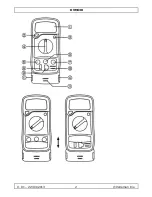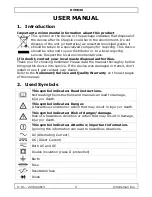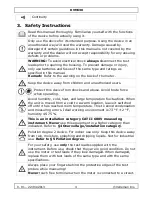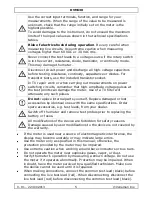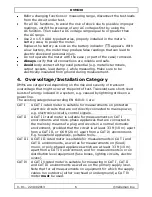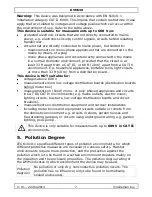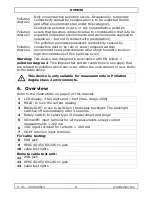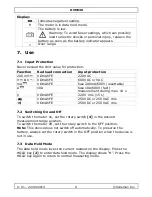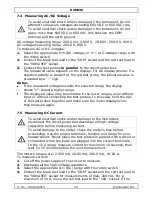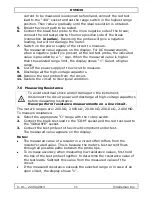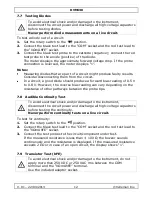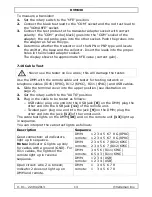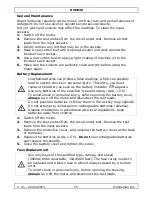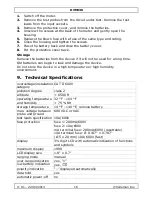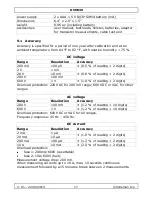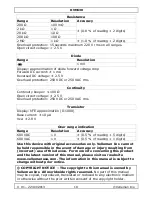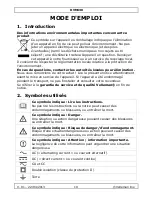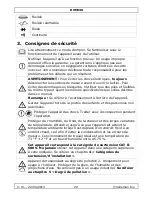
DVM630
V. 01 – 22/04/2013
5
©Velleman Inc.
Use the correct input terminals, function, and range for your
measurements. When the range of the value to be measured is
unknown, check that the range initially set on the meter is the
highest possible.
To avoid damages to the instrument, do not exceed the maximum
limits of the input values as shown in the technical specifications
tables.
Risk of electric shock during operation
. Be very careful when
measuring live circuits. Use extreme caution when measuring
voltages higher than 60 VDC or 30 VAC rms.
Never connect the test leads to a voltage source if the rotary switch
is in the current, resistance, diode, transistor, or continuity mode.
This may damage the meter.
Disconnect circuit power and discharge all high-voltage capacitors
before testing resistance, continuity, capacitance or diodes. For
transistor tests, use the included transistor socket.
In TV repair work or when carrying out measurements on power
switching circuits, remember that high-amplitude voltage pulses at
the test points can damage the meter. Use of a TV filter will
attenuate any such pulses.
Do not
replace internal parts yourself. Replace damaged or lost
accessories by identical ones with the same specifications. Order
spare accessories, e.g. test leads, from your dealer.
Switch off the meter and remove test probes prior to replacing the
battery or fuses.
All modifications of the device are forbidden for safety reasons.
Damage caused by user modifications to the device is not covered by
the warranty.
If the meter is used near a source of electromagnetic interference, the
display may become unstable or may indicate large errors.
Use the meter only as specified in this manual; otherwise, the
protection provided by the meter may be impaired.
Use extreme caution when working around bare conductors or bus bars.
Do not operate the meter near explosive gases, vapor, or dust.
Verify the meter‟s operation by measuring a known voltage. Do not use
the meter if it operates abnormally. Protection may be impaired. When
in doubt, have the meter serviced by a qualified technician. Make sure
the device cannot be used until it is repaired.
When making connections, connect the common test lead (black) before
connecting the live test lead (red). When disconnecting, disconnect the
live test lead (red) before disconnecting the common test lead (black).


